| |
Invasive Plants in Alberta: Forages and Hay Land | |
| |
|
|
| |
|
|
| |
What is the problem? | Species to watch out for | What you can do | General principles and resources
 | .
Land owners and occupiers are responsible for controlling noxious weeds and destroying prohibited noxious weeds under the Alberta Weed Control Act. Listed plants in the Act cause problems for the environment, health or economy. Know your responsibilities under the Act. Regardless of where plants are located, prevention is always the most effective approach in dealing with invasive plants.
. |  |
What is the Problem?
Invasive plants in hay land stands can cause several significant problems:
- reduce forage yield and productivity
- affect the palatability or nutritional value of hay
- be toxic or an irritant when fed to livestock
- cause taints or off-flavours in milk when fed to dairy cattle
The movement of hay or forage seeds containing invasive plant seeds can spread the seeds to new sites.
Invasive plants or their seeds in forages and forage seed crops can reduce grade and value as well as cause trade problems. For example, timothy hay for export to Japan must not contain quackgrass or other weeds.
In-crop chemical controls for these crops can be limited, especially with mixed grass and legume stands.
Species to Watch Out For
A wide array of invasive plants can occur in forage crops and hay land. In recent weed surveys in Alberta, common invaders from the Alberta Weed Control Act included the following:
- downy brome (Bromus tectorum)
- Canada thistle (Cirsium arvense)
- perennial sow-thistle (Sonchus arvensis)
- yellow toadflax (Linaria vulgaris)
- field bindweed (Convolvulus arvensis)
- white cockle (Silene latifolia ssp. alba)
- scentless chamomile (Tripleurospermum inodorum)
- ox-eye daisy (Leucanthemum vulgare)
Weed species are problematic in hay crops because weed seeds can easily contaminate forage seed crops, as the seeds are hard to separate from forage seeds.
Some weeds can accumulate nitrates under stressful growing conditions. Nitrates are toxic to livestock when fed in hay. Other invasive plants such as hoary alyssum (Berteroa incana), tall buttercup (Ranunclus acris) and hound’s-tongue (Cynoglossum officinale) contain toxins that can be harmful or fatal to livestock when consumed.
Downy brome (Bromus tectorum) has sharp awns on its seeds that can injure livestock that feed on it.
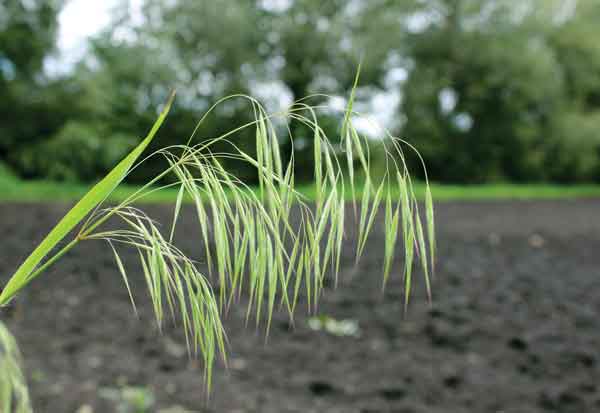
Downy brome (Bromus tectorum)
What You Can Do
- Ensure complete weed control in annual crops before seeding to forage crops.
- Use certified seed when establishing forages to minimize the introduction of invasive species, and check seed testing certificates for weed seeds that may be present.
- Use management practices that promote vigorous forage stand establishment and resist weed competition: use high quality seed, seed into a firm seedbed with adequate moisture and use inoculant for legume forage crops.
- Scout forage fields and treat small populations of invasive plants before they become a large problem.
- Fertilizing forage fields can promote the growth of grasses and reduce populations of some weeds such as tansy, oxeye daisy and Canada thistle.
- Some herbicide options are available for controlling weeds in grass or legume forage crops, but be aware that use restrictions differ between seedling, established and seed crops, and that haying and feeding restrictions apply to many products.
- For tall weeds such as Canada thistle, herbicides can be applied with a weed wiper to reduce the effect on desirable species.
- Biological control insects are available for some species such as leafy spurge, scentless chamomile, field bindweed and hound’s-tongue. Consult with Alberta Agriculture and Rural Development for information on how to obtain these insects.
- Weed-free hay may fetch a premium price in the marketplace: check out the Alberta Certified Weed- Free Hay Program on Alberta Agriculture and Rural Development’s website for more information.
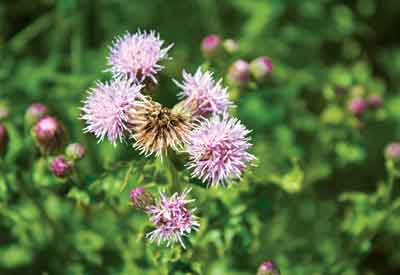 Canada thistle (Cirsium arvense)
Canada thistle (Cirsium arvense) | 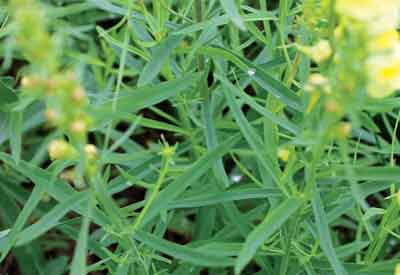
Yellow toadflax ( Linaria vulgaris) |
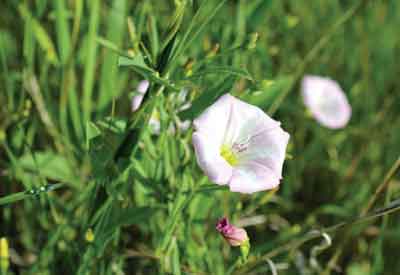
Field bindweed (Convolvulus arvensis) | 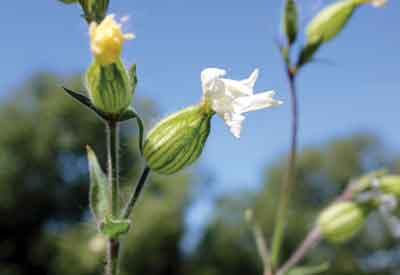
White cockle (Silene latifolia ssp. alba) |
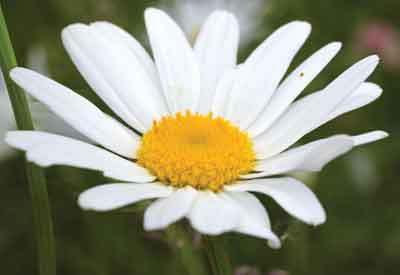
Ox-eye daisy (Leucanthemum vulgare) | 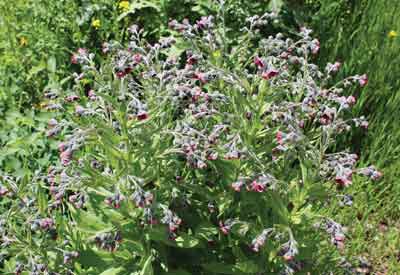
Hound’s-tongue (Cynoglossum officinale) |
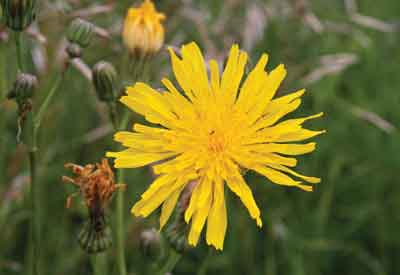
Perennial sow-thistle (Sonchus arvensis) | 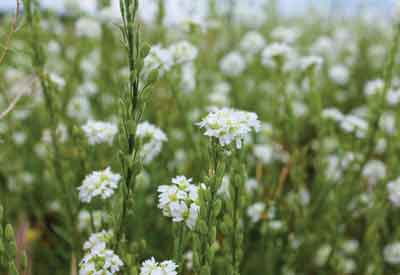
Hoary alyssum (Berteroa incana) |
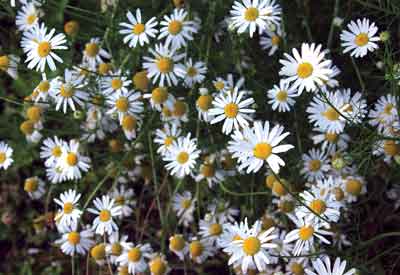
Scentless chamomile (Tripleurospermum inodorum) | 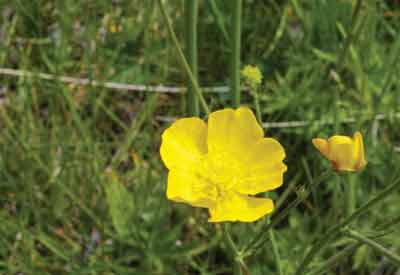
Tall buttercup (Ranunculus acris) |
General Principles and Resources
- Land owners and occupiers are responsible for controlling noxious weeds and destroying prohibite d noxious weeds. Know your responsibilities under the Alberta Weed Control Act.
- Learn to identify invasive plants.
- Be alert for invasive plants and respond early when they are found.
- Reduce the introduction of invasive plants as well as the reproduction and movement of their seeds and plant parts.
- Use effective, appropriate methods to control invasive plants. Alberta Agriculture and Rural Development, Environment and Sustainable Resource Development, municipal Agricultural Fieldmen and urban park departments can provide advice on control methods.
- Always follow label instructions when applying any herbicide; pay particular attention to grazing and feeding restrictions.
- Alberta Invasive Plant Identification Guide (from Wheatland County)
- Alberta Invasive Species Council factsheets
- Alberta Weed Control Act and Regulations
- Alberta Weed Monitoring Network
Learn More
Find out more on this topic and access these additional resources at the following web page:
Source: Agdex 640-15. February 2014. |
|
| |
|
|
| |
For more information about the content of this document, contact Chris Neeser.
This document is maintained by Jennifer Rutter.
This information published to the web on February 28, 2014.
Last Reviewed/Revised on August 21, 2018.
|
|